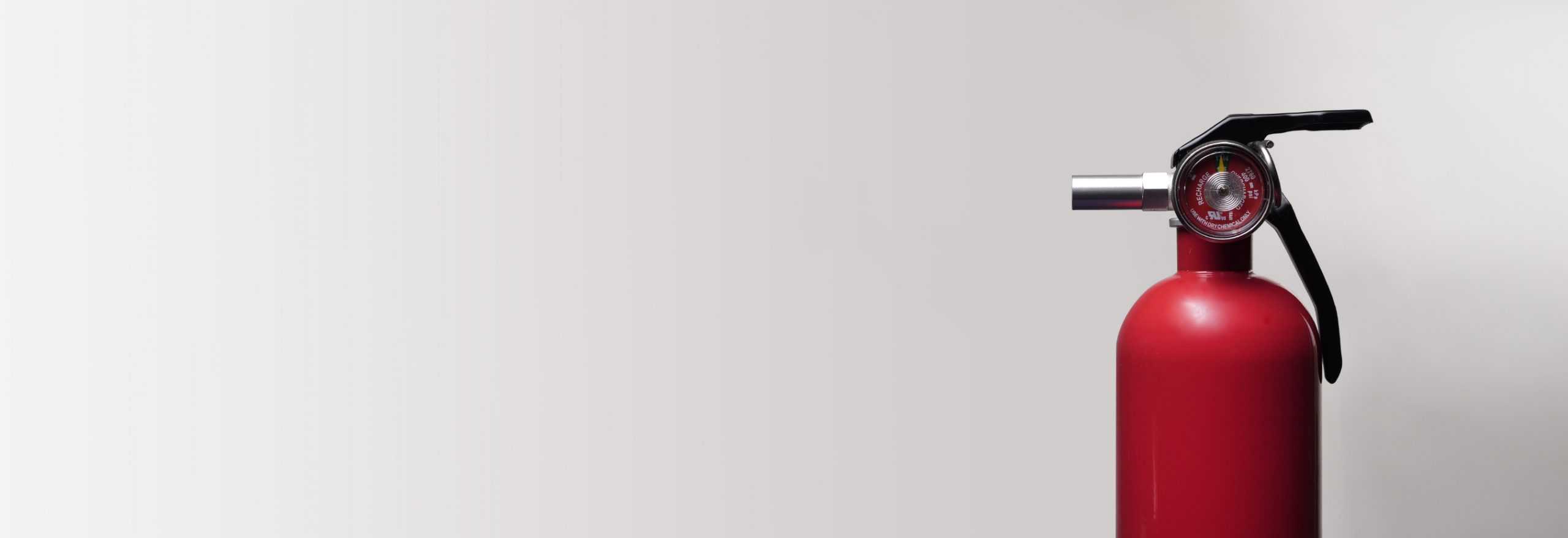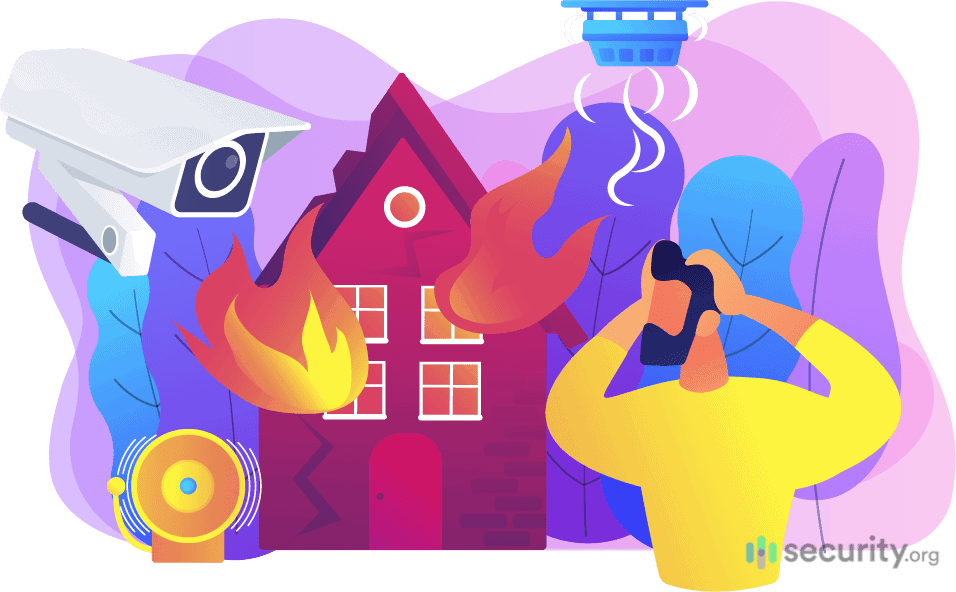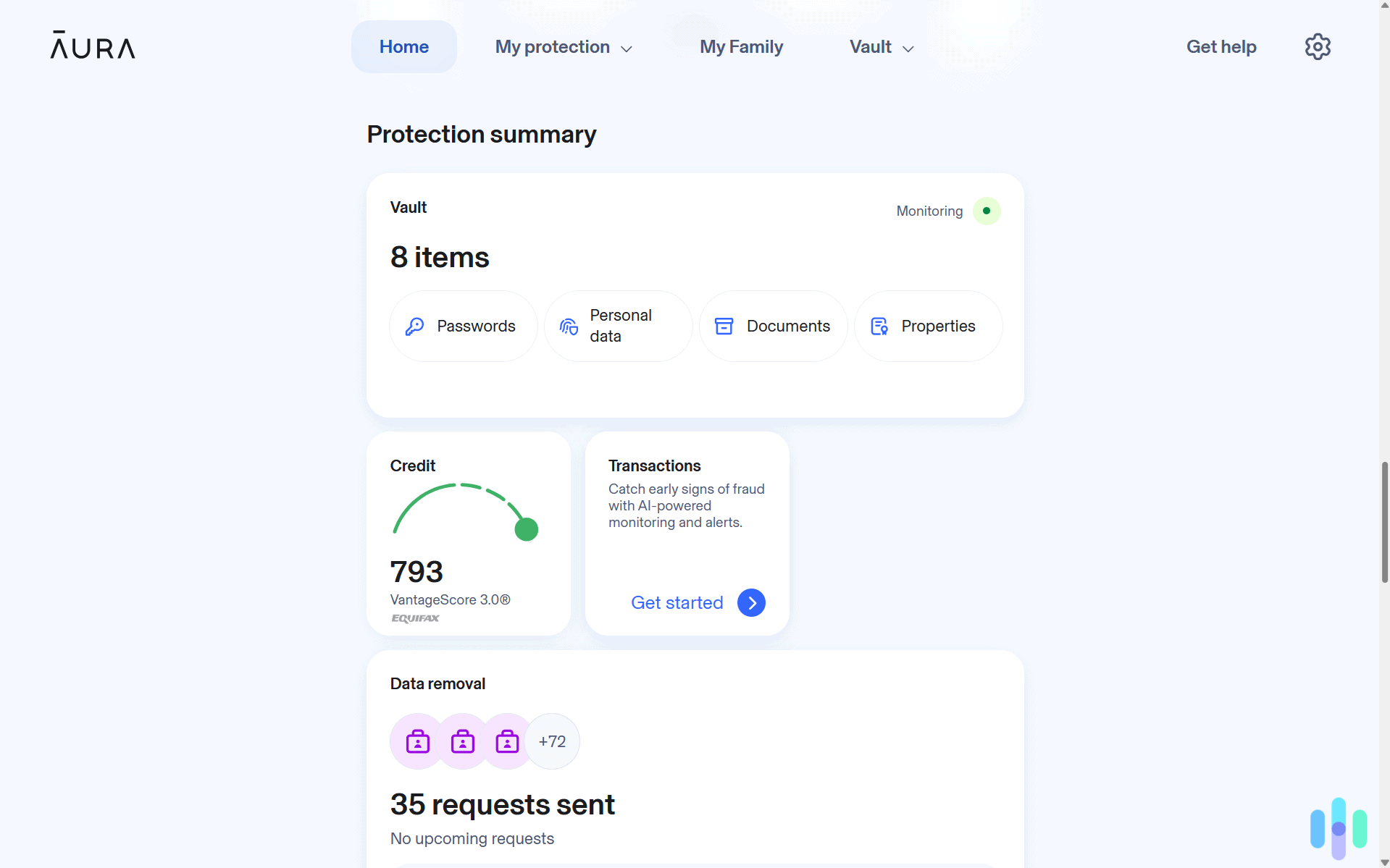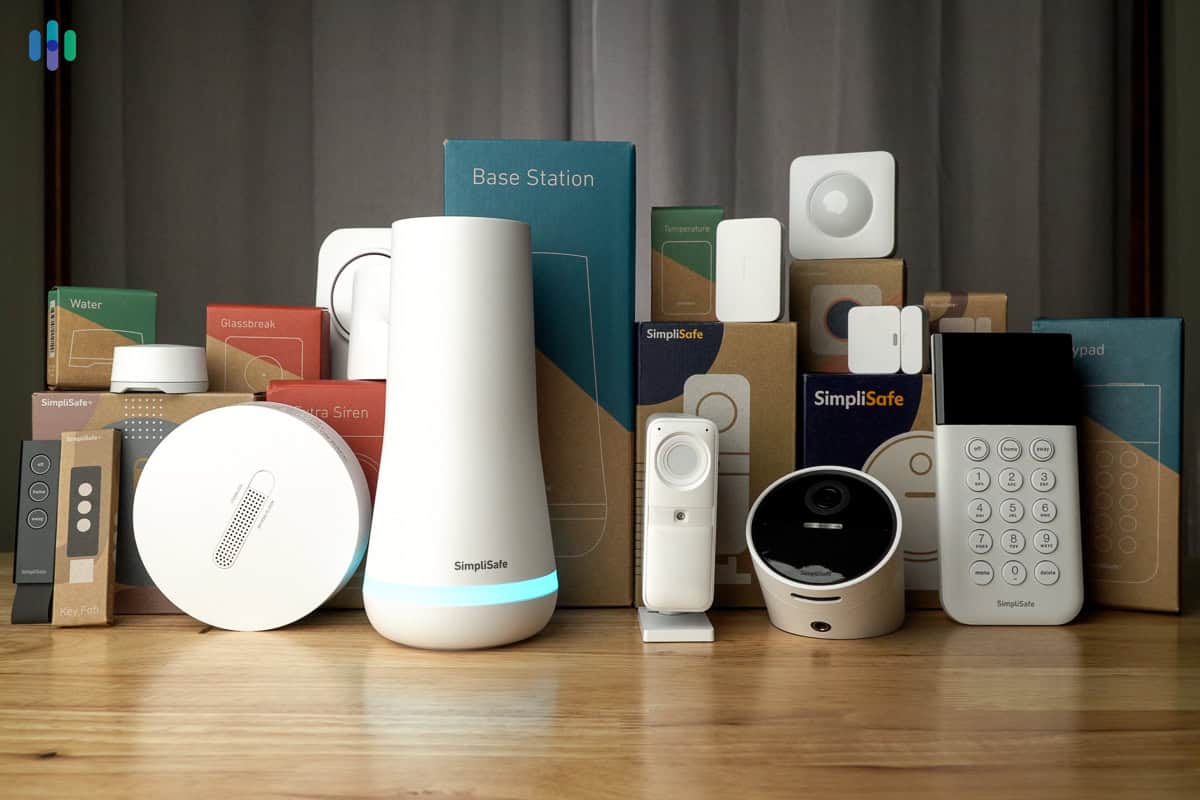There’s a saying that goes, “It would be better to be robbed of your things, rather than your things and possessions be burned to the ground.” Burglaries and fire are equally unfortunate, but our stance as security and safety advocates is that we should all take preventative measures to prevent both. Besides that, we should come prepared if the unfortunate happens.
What’s particularly worrisome about home fires is that it’s easy to be complacent. It’s so easy to fall into the “that won’t happen to me” mentality, yet all it takes is one cooking accident or one ember from the fireplace to put us in danger and upend our lives. With that in mind, we’ve put together tips on how to prevent fires from breaking out at home and, if one starts, the best steps we can take to make sure everyone gets out safely.
Security System Finder
By answering a handful of easy questions, you can discover the security system that’s perfectly tailored to your needs!


How to Prevent Home Fires
We always say in our home security reviews that while detection is one of the core functions of security systems, we should always take preventative measures first. Sure, a DIY security system with smoke alarms can alert you the moment a fire starts to break out, but wouldn’t it be better if fire didn’t break out at all? If we can limit and control the leading causes of home fires,1 it’s less likely that we’ll ever have to go through the stress of putting one out.
While the tips below might seem like a lot to remember, once you incorporate them into your daily life, we promise they’ll seem as natural as washing the dishes.
Fire Safety Hazards in the Home
Cooking and heating are at the top of the home fire hazards list. Be attentive in the kitchen, keep kids and pets away from heaters and candles, and try to incorporate these practices into your home life.
When cooking:
- Stay in the kitchen whenever something is frying, grilling, boiling, or broiling.
- When slow-cooking anything, whether you’re baking, roasting, or simmering, use a timer and check on it every 15 minutes or less.
- Don’t use the oven or the stove when you’re sleepy or under the influence of alcohol.
- Keep flammable objects at least 3 feet away from the stovetop.
When heating your home:
- Only purchase space heaters that shut off automatically when they fall over, and always place them on level, nonflammable surfaces. Avoid placing them on wooden floors, rugs, or carpets.
- Never leave a space heater or a fireplace unattended. Make sure to turn off space heaters and extinguish all embers before leaving rooms.
- Keep flammable objects and objects made of light materials like wood, paper, and fabric at least 3 feet away from space heaters or fireplaces
Pro Tip: Paper, clothing, bedding, drapery, and rugs are common items in the home you should always keep away from fire and heat sources.
Other leading home fire risks:
- Never smoke inside the home. Smoking was the leading cause of home fire deaths from 2014 through 2018.2
- Switch to flameless candles. If you must use candles with a flame, never leave them unattended, and be sure to extinguish them before leaving a room.
- Replace all cords that have frayed or bare wires. Electrical equipment is the third major cause of home fires and the leading cause of property damage.
- Keep matches and lighters away from children. Store them safely and securely, preferably somewhere high up and/or with a lock.
- Keep pets safe by not placing space heaters or candles within their reach.
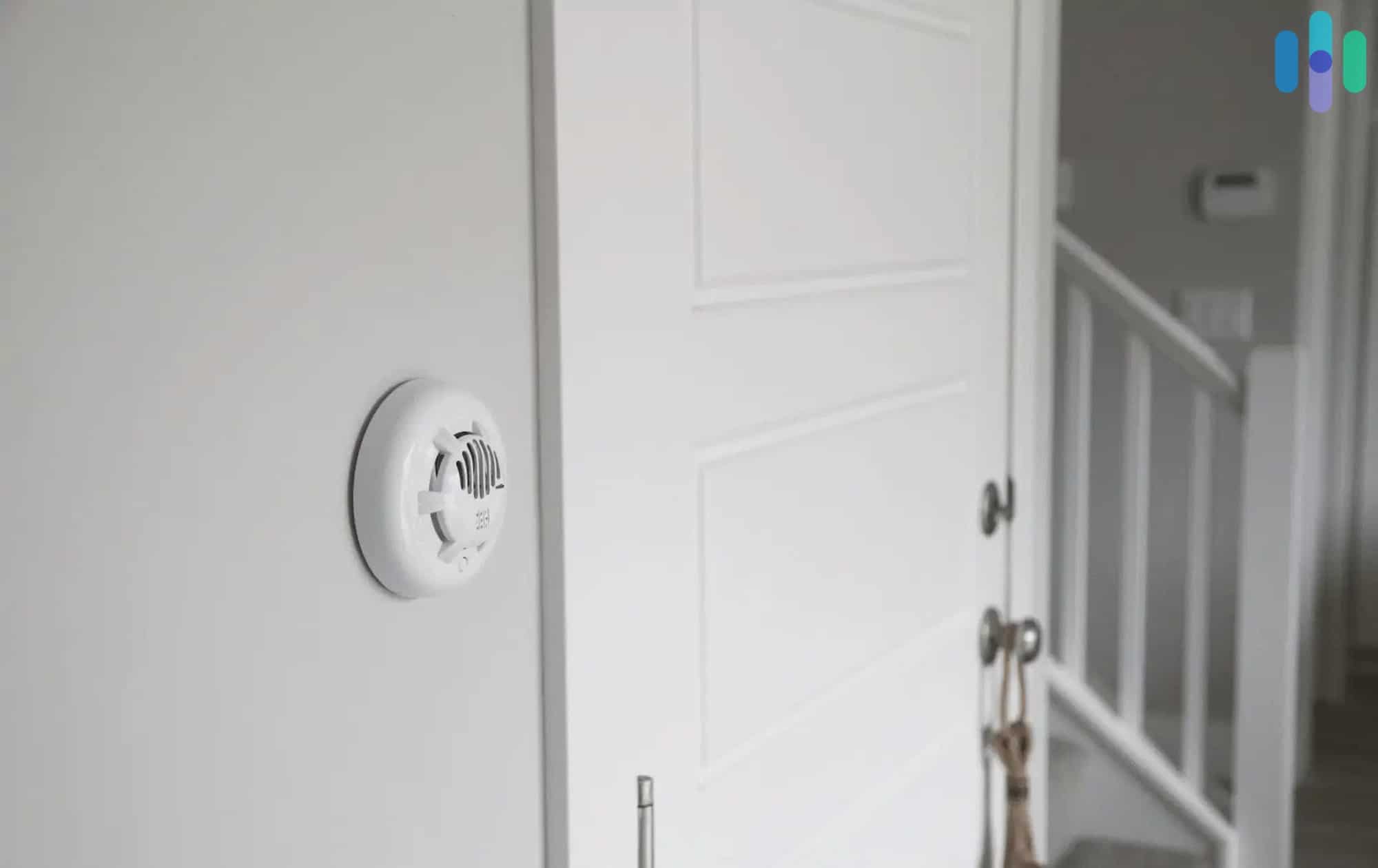
Smoke Alarms
Smoke alarms3 are critical early warning systems for fire prevention in the home, and most states require them by law. The most important thing about smoke alarms is that, even if the home burns, they are often the reason everyone escapes the home safely. The placement and maintenance of smoke alarms are key to maximize their value and effectiveness in the home. It’s hard to overstate how important smoke alarms are for protecting life and limb, so try to remember that next time one of your smoke alarms starts chirping at 3 a.m. to signal a low battery!
>> Related: How to Stop a Smoke Alarm From Chirping
Where to install smoke alarms:
- Install smoke alarms inside every bedroom, outside every sleeping area, and on every floor of the home, including basements.
- Keep smoke alarms at least 10 feet away from kitchens in order to prevent false alarms.
- Place fire alarms on the ceiling or high up on walls near the ceiling.
- Use a home security system with interconnected smoke alarms and other environmental sensors. These days, you can even buy smoke alarms that send alerts to your phone no matter where you are and integrate them into your smart home.
- People who are deaf or hard of hearing should install smoke alarms with strobe lights and bed shakers.
Pro Tip: In our recent Vivint review, we saw how home automation can potentially help lessen the dangers of fire. Our Vivint system, which came with smoke alarms and integrated with our Nest Thermostat, allowed us to make an automated rule that would shut off our heating and AC vents in case the smoke alarm detects smoke. That would prevent air from the vents from supplying oxygen to the fire, which would only allow the fire to grow more rapidly.
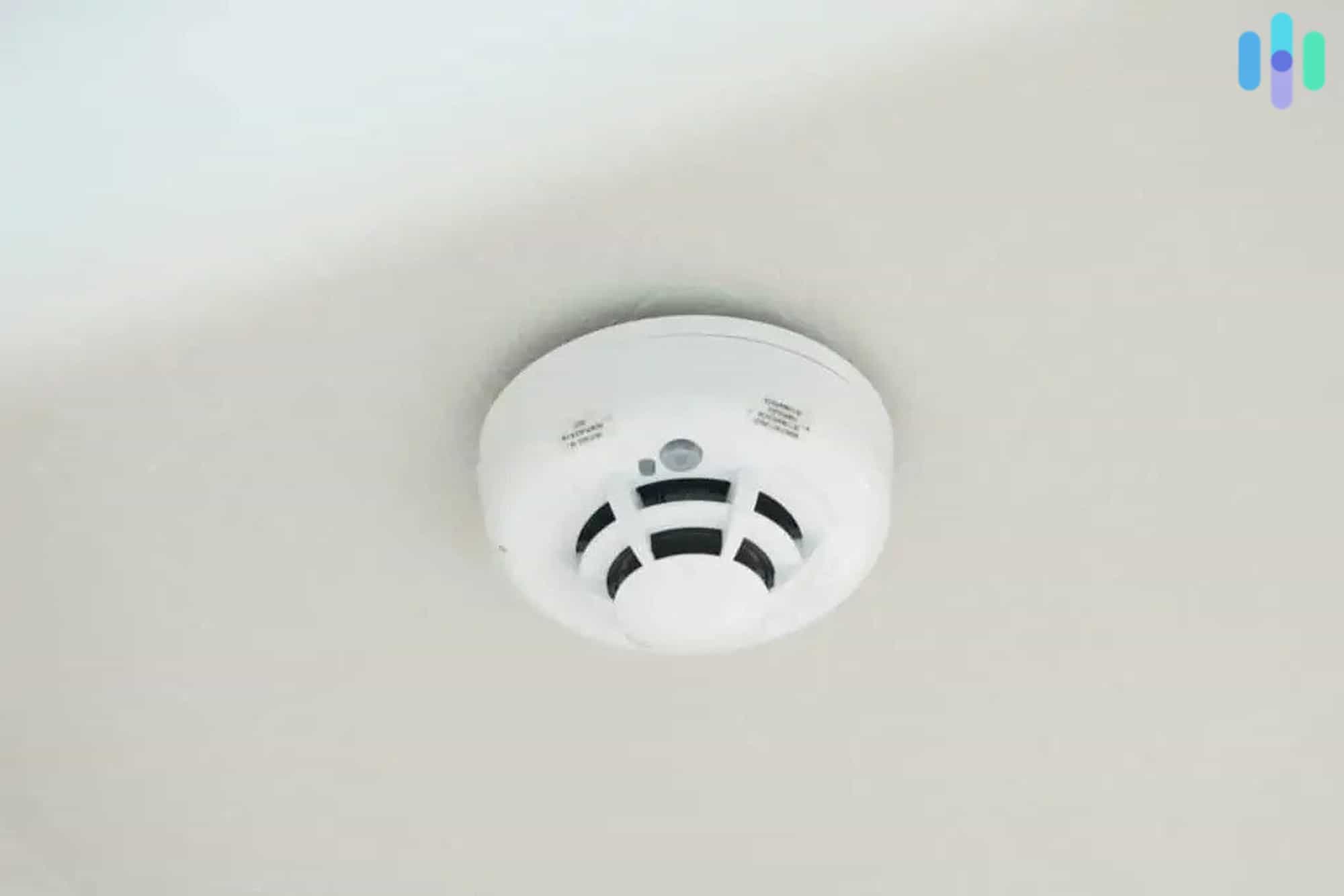
How to maintain smoke alarms:
- Test your smoke alarms at least once a month.
- Change the batteries in your smoke alarms at least once a year, and remember to replace the batteries in your carbon monoxide detectors at the same time. Google Nest offers Nest Protect, a combined smoke and CO detector that works with the Nest Secure system, for example.
- Completely replace smoke alarms that are 10 years old or older.
What to Do if a Fire Starts
Once a fire breaks out in your home, you will have seconds to make important decisions about putting out the fire, escaping from the building, and calling the fire department. There will not be time to learn how to do any of these things in the moment, so preparation is key. We’ll explain in more detail below, but what’s important here is knowing your way around both a fire extinguisher and your home. Every door and window should be considered an exit option if possible.
Fire Extinguishers
Having a few fire extinguishers4 in your home can help you stop small fires before they have the chance to spread and burn out of control. To make sure that the extinguishers will work when you need them, follow the steps below.
How to choose and store a fire extinguisher:
- Be sure to get the correct fire extinguishers for the type of fire you’re likely to encounter in your home. For most normal home use, this is an ABC dry chemical fire extinguisher.5
- Make sure that your fire extinguishers are properly charged by using the gauge or test button to check the pressure.
- Follow the manufacturer’s instructions on how to replace or recharge your fire extinguishers.
- Install the extinguishers near an exit, away from heat sources and high enough up on the wall that adults can access them but not small children.
- Review the instructions once a year, since there won’t be time to learn how to use your extinguishers in the event of a fire.
Before using a fire extinguisher:
- Check that everyone else is out of or leaving the home.
- Make sure someone has already called the fire department.
- Confirm that the fire is small and not spreading, with very little smoke.
- Keep your back to an exit that you can use quickly.
How to use a fire extinguisher:
- Follow the PASS system:
- Pull the pin.
- Aim low at the base of the fire.
- Squeeze the handle slowly.
- Sweep the nozzle side to side.
- If you follow the PASS system and the fire does not die down immediately, drop the extinguisher and get out of the house.
Fire Escape Plan
A small fire in the home can rage out of control in an instant. In most cases, you only have two minutes to exit the home. A home security system with professional emergency response monitoring like ADT can make sure the fire department is alerted, but that doesn’t keep everyone safe as the fire spreads. Learn more about ADT’s pricing for professional monitoring.
Designing and practicing a fire escape plan6 can prevent injury and loss of life if the worst should happen. This sort of home fire drill doesn’t have to be a somber and depressing event, but it’s also not a good idea to make a game out of it, especially if there are small children in the home.
How to make a home fire escape plan:
- Have at least two ways out of each room.
- Make sure all doors and windows leading outside open easily.
- Identify secondary routes outside (windows leading to adjacent rooftops, collapsible ladders deployed from upper-story windows, etc.).
- Establish a designated meeting space outside that is a safe distance away from the building.
- If you live in a multistory building, always plan on using the stairs or the fire escape, never an elevator.
Practice:
- With everyone in the household both at night and during the day, twice a year
- Testing door handles to check if they’re hot before opening them
- Closing doors behind you
- The “stop, drop, and roll” method, for if you catch fire
- Getting out, closing your eyes, covering your mouth, and crawling low to the floor
Teach children:
- To never hide during a fire
- How to get out on their own if nobody can help them
Pro Tip: Always keep exits clear of furniture, toys, and other clutter.
Recap
Fires in the home are never expected. The key responsibilities we need to remember start with risk mitigation from cooking and heat sources. Next, we should maintain enough properly placed smoke detectors and fire extinguishers throughout the home. Finally, we need to design and practice a fire escape plan regularly with everyone at home. If we incorporate these actions into our lives, we can keep our families safe and the likelihood of fires to a minimum.
FAQs
Still want to know more? Here are five of the most common questions people ask about home fire safety.
-
What is basic fire safety?
Basic fire safety consists of installing smoke alarms, testing them and changing their batteries regularly, and designing and practicing a home escape plan.
-
What are the five classes of fire?
These are the five classes of fire:
- Class A: These fires involve solid materials such as wood, paper, or textiles.
- Class B: These fires involve flammable liquids such as petrol, diesel, and oils.
- Class C: These fires involve electrical equipment.
- Class D: These fires involve flammable metals.
- Class K: These fires involve cooking oils and fats.
-
How can we prevent fire accidents?
To prevent fire accidents, always stay in the room while cooking; keep flammable items away from fireplaces, candles, and portable heaters; and don’t smoke indoors.
-
What are the three main causes of fires in the home?
According to the National Fire Protection Association, the three main causes of home fires in the U.S. are cooking (49 percent), heating equipment (14 percent), and faulty wiring (10 percent).
-
What is the first rule of fire safety?
The first rule of fire safety is to get out, stay out, and call for help.

